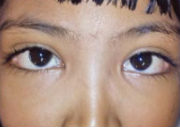Sunday, July 24, 2016
Sunday, July 17, 2016
WHAT IS SHOCK- A Simplified approach, iSHOCK
iSHOCK
Condition of severe impairment of tissue perfusion leading to cellular injury and dysfunction. Rapid recognition and treatment are essential to prevent irreversible organ damage and death
Common CAUSES
Oligemic shock
Hemorrhage
Volume depletion (e.g., vomiting, diarrhea, diuretic overusage, ketoacidosis)
Internal sequestration (ascites, pancreatitis, intestinal obstruction)
Cardiogenic shock
Myopathic (acute MI, dilated cardiomyopathy)
Mechanical (acute mitral regurgitation, ventricular septal defect, severe aortic stenosis)
Arrhythmic
Extracardiac obstructive shock
Pericardial tamponade
Massive pulmonary embolism
Tension pneumothorax
Distributive shock (profound decrease in systemic vascular tone)
CLINICAL FEATURES:
Hypotension (mean arterial bp <60 mmHg), tachycardia, tachypnea, pallor, restlessness, and altered sensorium.
Signs of intense peripheral vasoconstriction, with weak pulses and cold clammy extremities. In distributive (e.g., septic) shock, vasodilatation predominates and extremities are warm.
Oliguria (<20 mL/h) and metabolic acidosis common.
Acute lung injury and acute respiratory distress syndrome with noncardiogenic pulmonary edema, hypoxemia, and diffuse pulmonary infiltrates.
EXAMINATION:
Friday, July 15, 2016
FEVER IN A CHILD
Fever in a Child
is the most common chief complaint presenting to an emergency department and accounts for 30% of outpatient visits each year. Early studies suggested that infants younger than 3 months were at high risk of a serious bacterial illness (SBI), which included sepsis, pyelonephritis, pneumonia, and meningitis. Current practice guidelines vary in their cut-offs for evaluation and treatment strategies. Neonates are clearly at the highest risk, while infants in their second and third months of life gradually transition to the lower risk profile of older infants and children. The incidence of bacteremia falls from around 10% among febrile neonates to approximately 0.2% in immunized infants and children older than 4 months; meningitis risk decreases from about 1% in the first month of life to < 0.1% later in infancy; the risk for pyelonephritis remains relatively constant among young girls with fever, and gradually decreases among boys over the first year of life. The individual practitioner must weigh these risks against the invasiveness of their ED evaluation and make shared decisions with the family on the best approach.
CLINICAL FEATURES:
In the neonate or infant < 2 to 3 months of age, the threshold for concerning fever is 38°C (100.4°F); in infants and children 3 to 36 months old, the threshold is 39°C (102.2°F). In general, higher temperatures are associated with a higher incidence of serious bacterial illness.
Young infants are especially problematic in assessing severity of illness. Immature development and immature immunity make reliable examination findings difficult. Persistent crying, inability to console, poor feeding, or temperature instability may be the only findings suggestive of an SBI.
Sunday, May 15, 2016
Epiblepharon & Euryblepharon
Epiblepharon
Extra fold of skin in the lower lid with inturning of eyelashes
Nasal 1/3rd is most commonly affected
Treatment: Plastic repair if necessary to prevent recurrent infection.
Euryblepharon
Rare, congenital, bilateral, not so serious condition
and may be with epicanthus
Treatment:
No treatment for most of the cases; lateral tarsorrhaphy for symptomatic cases.
Extra fold of skin in the lower lid with inturning of eyelashes
Nasal 1/3rd is most commonly affected
Treatment: Plastic repair if necessary to prevent recurrent infection.
Euryblepharon
Rare, congenital, bilateral, not so serious condition
- Palpebral apertures are larger than normal
and may be with epicanthus
- Excessive watering may be a problem due to more exposure
Treatment:
No treatment for most of the cases; lateral tarsorrhaphy for symptomatic cases.
Bilateral eyelids drooping Disease
Blepharophimosis Syndrome (Bilateral eyelid drooping disease)
Autosomal dominant Condition
(Can be transmitted from both mother or father, usually express in every generation)
Features:
Syndrome consists of bilateral:
– Narrowing of vertical and horizontal palperbral apertures
– Telecanthus
– Inverse epicanthus folds
– Lateral ectropion and moderate to severe ptosis
May be asymmetrical and without epicanthic folds
Treatment:
Plastic reconstruction of lids, along with bilateral brow suspension for ptosis.
Autosomal dominant Condition
(Can be transmitted from both mother or father, usually express in every generation)
Features:
Syndrome consists of bilateral:
– Narrowing of vertical and horizontal palperbral apertures
– Telecanthus
– Inverse epicanthus folds
– Lateral ectropion and moderate to severe ptosis
May be asymmetrical and without epicanthic folds
Treatment:
Plastic reconstruction of lids, along with bilateral brow suspension for ptosis.
Subscribe to:
Comments (Atom)










